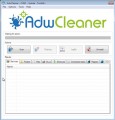If you find that your internet browser has become show the unwanted firefox privacy4browsing.com pop-ups then it’s a sign that your system is infected with malicious software from the adware family. The ‘ad-supported’ software (also known as adware) is a form of unwanted software that can open a huge number of popups without a user’s permission. Moreover, it can redirect the browser on dangerous and misleading sites. Also, if you seeing that the Google Chrome, FF, Internet Explorer and Microsoft Edge tries to load an unknown web-page, when you try to open a long-known page, then you do not need to wait! Press the stop button in web browser’s address bar. Follow the step-by-step instructions below and clean your PC from adware ASAP. It will assist you to remove the redirect to firefox.privacy4browsing.com and any annoying pop-up ads.
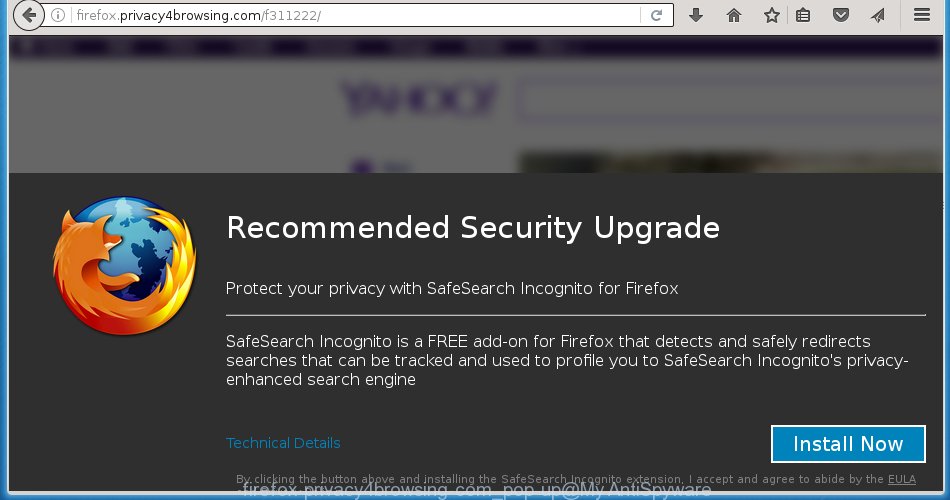
http://firefox.privacy4browsing.com/ …
The adware can change the settings of the Chrome, Firefox, Internet Explorer and MS Edge, but often that a dangerous software like this can also infect all types of browsers by changing their desktop shortcuts. Thus forcing the user each time run the web browser to see firefox.privacy4browsing.com annoying pop-ups.
The ad supported software is not a virus, but the virus behaves similarly. As a rootkit hides in the system, changes web browser settings and blocks them from changing. Also the ad-supported software can install additional browser extensions, addons and modules that will inject advertising banners within the Google Chrome, Microsoft Internet Explorer, FF and Edge’s screen. Moreover, the adware may install a browser hijacker that once started, will alter the internet browser’s home page and search engine. And finally, the adware can collect a wide variety of personal information such as what web-pages you are opening, what you are looking for the Internet and so on. This information, in the future, may be transferred to third parties.
Therefore it is very important to follow the step-by-step instructions below ASAP. The few simple steps will assist you to remove ad-supported software as well as clean your personal computer from the firefox.privacy4browsing.com . What is more, the few simple steps below will help you remove other malicious software such as unwanted toolbars and browser hijackers, which could penetrate the PC system along with the adware.
How does privacy4browsing.com pop ups get installed onto machine
Most commonly, the ad-supported software is bundled within the installation packages from a free hosting and file sharing web sites. So, install a free programs is a a good chance that you will find some bundled ad supported software. If you don’t know how to avoid it, then use a simple trick. During installation, choose the Custom or Advanced installation option. Next, click ‘Decline’ button and clear all checkboxes on offers that ask you to install an unknown software. Moreover, please carefully read Term of use and User agreement before installing any applications or otherwise you can end up with another unwanted software on your PC such as this ‘ad-supported’ software that redirect the Chrome, Microsoft Internet Explorer, Mozilla Firefox and MS Edge onto the unwanted firefox.privacy4browsing.com web site.
How to manually remove firefox.privacy4browsing.com
If you perform exactly the instructions below you should be able to get rid of the firefox.privacy4browsing.com pop-ups. Read it once, after doing so, please print this page as you may need to close your web browser or reboot your PC.
- Remove suspicious and unknown software by using Windows Control Panel
- Remove firefox.privacy4browsing.com from Mozilla Firefox
- Disinfect the browser’s shortcuts to get rid of firefox.privacy4browsing.com redirect
- Delete unwanted Scheduled Tasks
Uninstall suspicious and unknown software by using Windows Control Panel
The best way to begin the personal computer cleanup is to delete unknown and suspicious programs. Using the Windows Control Panel you can do this quickly and easily. This step, in spite of its simplicity, should not be ignored, because the removing of unneeded programs can clean up your internet browser from popup ads, hijackers and so on.
- If you are using Windows 8, 8.1 or 10 then press Windows key, click Search. Type “Control panel”and press Enter.
- If you are using Windows XP, Vista, 7, then press “Start” button and click “Control Panel”.
- It’ll display the Windows Control Panel.
- Click “Uninstall a program” under Programs category.
- You will see a list of all installed software.
- Scroll through the all list, and uninstall suspicious and unknown software. To quickly find the latest installed applications, we recommend sort applications by date.
See more details in the video instructions below.
Remove firefox.privacy4browsing.com from Mozilla Firefox
If the Mozilla Firefox settings have been modified by the adware, then resetting it to the default state can help you to delete the redirect onto firefox.privacy4browsing.com pop-ups.
First, launch the Firefox and press ![]() button. It will display the drop-down menu on the right-part of the internet browser. Next, click the Help button (
button. It will display the drop-down menu on the right-part of the internet browser. Next, click the Help button (![]() ) as shown on the screen below.
) as shown on the screen below.

In the Help menu, select the “Troubleshooting Information” option. Another way to open the “Troubleshooting Information” screen – type “about:support” in the browser adress bar and press Enter. It will display the “Troubleshooting Information” page like below. In the upper-right corner of this screen, press the “Refresh Firefox” button.

It will open the confirmation prompt, click the “Refresh Firefox” button. The FF will start a task to fix your problems that caused by the adware. When it is complete, press the “Finish” button
Disinfect the browser’s shortcuts to get rid of firefox.privacy4browsing.com redirect
When the ‘ad-supported’ software is started, it can also change the internet browser’s shortcuts, adding an argument like “http://site.address” into the Target field. Due to this, every time you start the web-browser, it will be redirected to an annoying pop-ups.
To clear the web browser shortcut, right-click to it and select Properties. On the Shortcut tab, locate the Target field. Click inside, you will see a vertical line – arrow pointer, move it (using -> arrow key on your keyboard) to the right as possible. You will see a text that starts with “http://” that has been added here. You need to remove it.
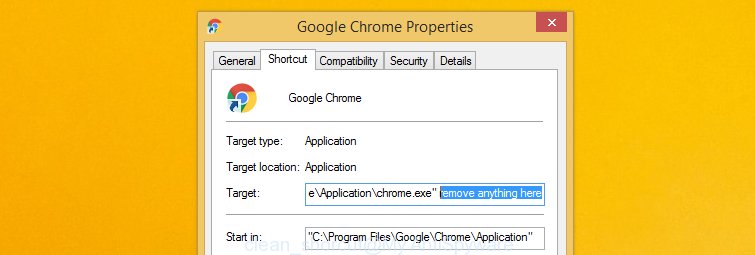
When the argument is removed, press the OK button. You need to clean all shortcuts of all your browsers, as they may be infected too.
Delete unwanted Scheduled Tasks
If the unwanted firefox.privacy4browsing.com page opens automatically on Windows startup or at equal time intervals, then you need to check the Task Scheduler Library and delete all the tasks that have been created by malicious software.
Press Windows and R keys on the keyboard together. This opens a prompt that titled with Run. In the text field, type “taskschd.msc” (without the quotes) and click OK. Task Scheduler window opens. In the left-hand side, press “Task Scheduler Library”, as on the image below.
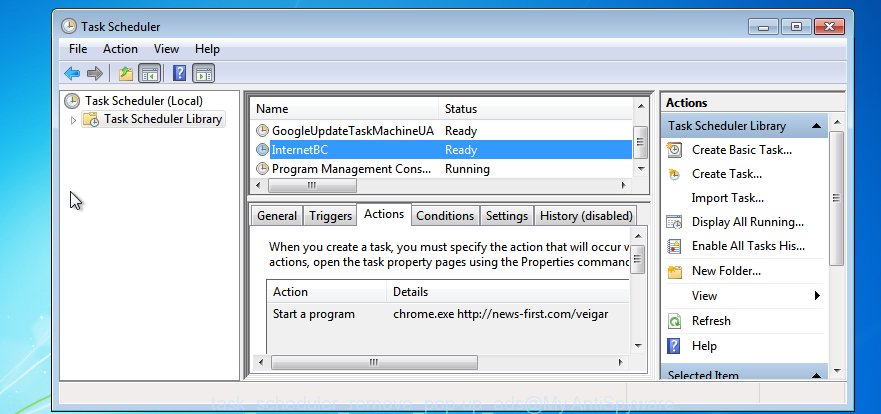
Task scheduler
In the middle part you will see a list of installed tasks. Select the first task, its properties will be open just below automatically. Next, press the Actions tab. Pay attention to that it launches on your machine. Found something like “explorer.exe http://site.address” or “firefox.exe http://site.address”, then you need remove it. If you are not sure that executes the task, check it through a search engine. If it is a component of the ‘ad-supported’ software, then this task also should be removed.
Having defined the task that you want to get rid of, then click on it with the right mouse button and select Delete as shown on the image below.

Delete a task
Repeat this step, if you have found a few tasks that have been created by adware. Once is finished, close the Task Scheduler window.
Get rid of firefox.privacy4browsing.com pop-ups automatically
You can delete firefox.privacy4browsing.com automatically with a help of Malwarebytes Free. We recommend this free malware removal utility because it can easily remove ad-supported software, browser hijackers, potentially unwanted programs and toolbars with all their components such as files, folders and registry entries.
Download Malwarebytes Free on your machine from the link below. Save it on your Desktop.
327725 downloads
Author: Malwarebytes
Category: Security tools
Update: April 15, 2020
When downloading is done, close all windows on your PC. Further, run the file named mb3-setup. If the “User Account Control” dialog box pops up as shown below, press the Yes button.

It will show the “Setup wizard” which will help you install Malwarebytes on the computer. Follow the prompts and do not make any changes to default settings.

Once the setup is finished successfully, click Finish button. Then Malwarebytes will automatically start and you can see its main window like below.

Next, click the “Scan Now” button . This will start scanning the whole PC system to find out malware and adware which cause the firefox.privacy4browsing.com pop-ups. When a threat is found, the number of the detected objects will change accordingly. Wait until the the checking is complete. Please be patient.
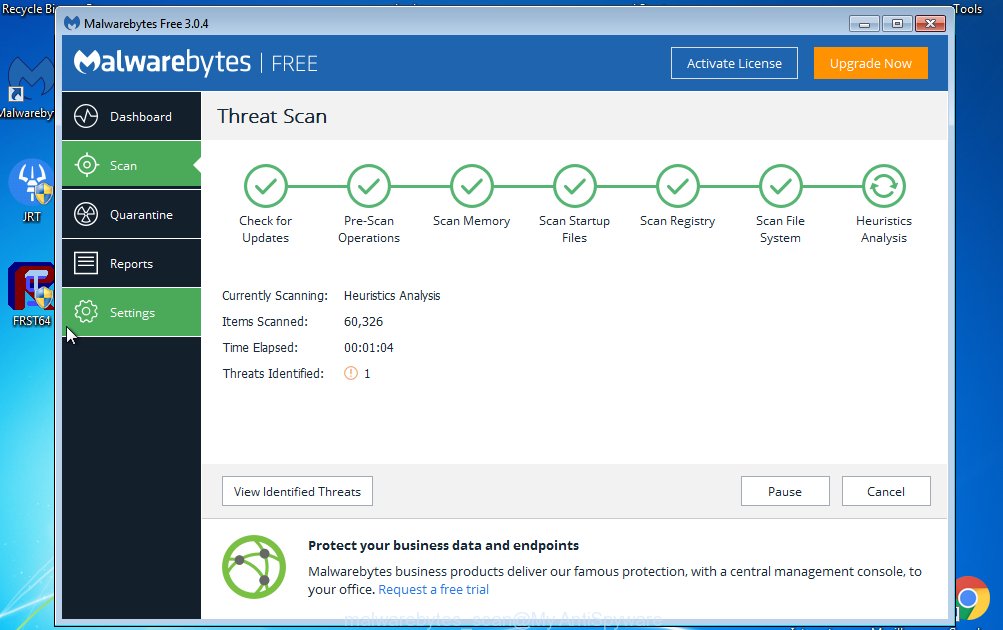
Once the scan is complete, you can check all threats detected on your PC system. Make sure all entries have “checkmark” and click “Quarantine Selected” button.
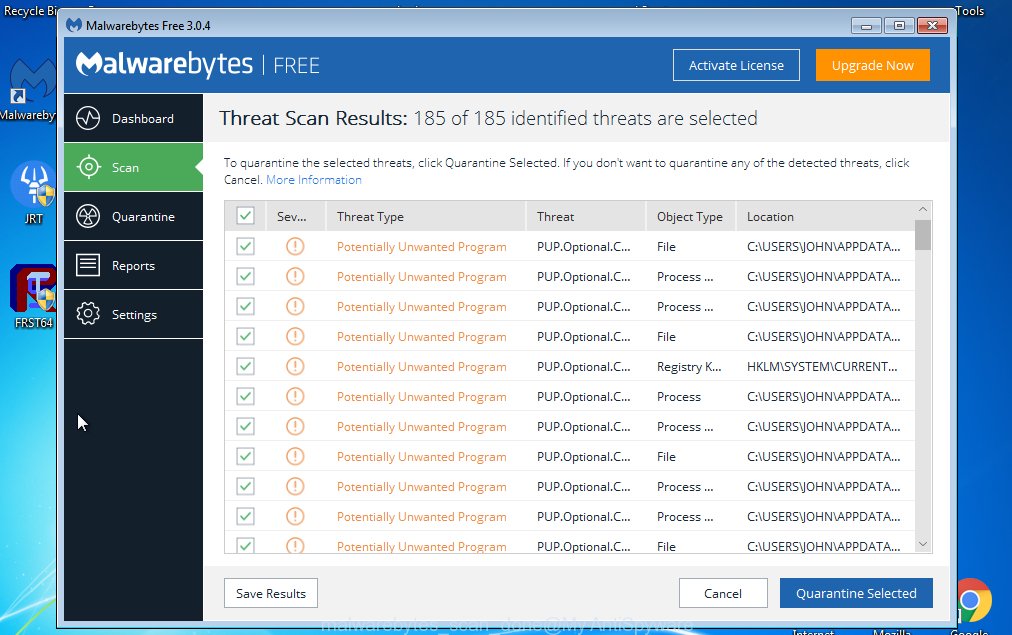
The Malwarebytes will start removing malware and adware that cause firefox.privacy4browsing.com pop-up ads. Once the disinfection is finished, you may be prompted to reboot your PC system. I recommend you look at the following video, which completely explains the procedure of using the Malwarebytes to remove adware and other dangerous programs.
Block firefox.privacy4browsing.com and other unwanted pages
To increase your security and protect your system against new unwanted pop-ups and malicious web pages, you need to use program that blocks access to malicious pop-ups and web pages. Moreover, the application can block the show of intrusive advertising, that also leads to faster loading of web sites and reduce the consumption of web traffic.
Download AdGuard program from the following link.
27036 downloads
Version: 6.4
Author: © Adguard
Category: Security tools
Update: November 15, 2018
When the download is finished, launch the file named adguardInstaller. You will see the “Setup Wizard” screen like below.

Follow the prompts. Once the setup is finished, you will see a window as shown below.

You can click “Skip” to close the install program and use the default settings, or press “Get Started” button to see an quick tutorial which will help you get to know AdGuard better.
In most cases, the default settings are enough and you do not need to change anything. Each time, when you start your system, AdGuard will start automatically and block ads, sites like firefox.privacy4browsing.com, as well as other malicious or misleading web sites. For an overview of all the features of the program, or to change its settings you can simply double-click on the AdGuard icon, that is located on your Windows desktop.
Remove privacy4browsing.com and malicious extensions with AdwCleaner.
If MalwareBytes Anti-malware cannot remove the annoying firefox.privacy4browsing.com from the Google Chrome, FF, MS Edge and Internet Explorer, then we suggests to use the AdwCleaner. AdwCleaner is a free removal tool for adware, browser hijackers, PUPs and toolbars.
Download AdwCleaner by clicking on the link below.
225789 downloads
Version: 8.4.1
Author: Xplode, MalwareBytes
Category: Security tools
Update: October 5, 2024
After the download is done, open the file location. Double click the AdwCleaner icon. Once this utility is opened, you will see a screen such as below.
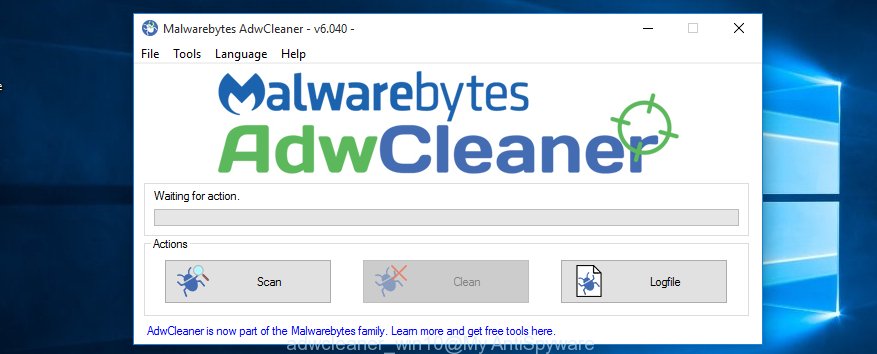
Now, click the “Scan” button . This will begin scanning the whole computer to find out malicious extensions and adware which shows pop-ups from firefox.privacy4browsing.com page. When the system scan is complete, it will display a scan report as shown below.
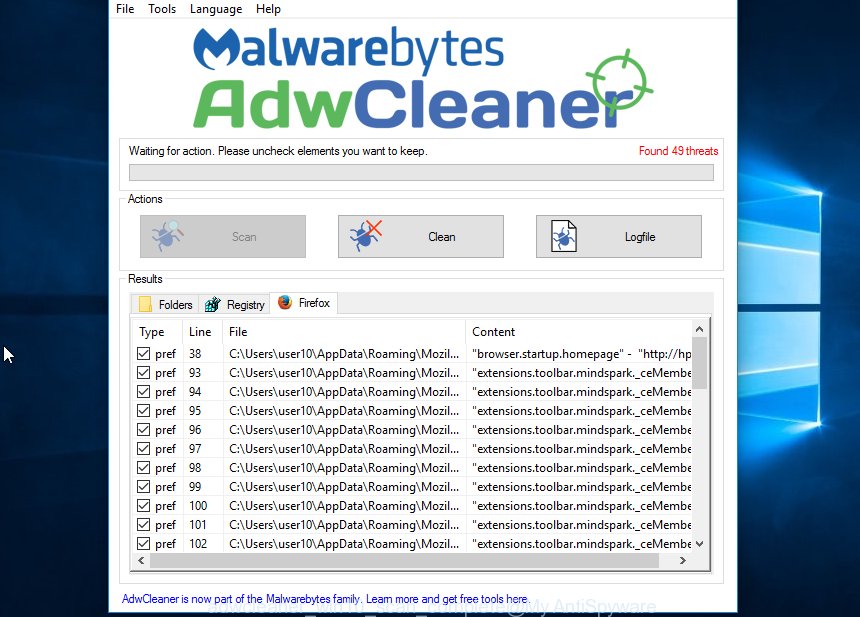
Review the report and then press “Clean” button. It will open a prompt. Click “OK”. Once the cleaning procedure is done, AdwCleaner may ask you to reboot your computer.
Look at the following video, which completely explains the procedure of using the AdwCleaner to remove adware, browser hijackers and other dangerous software.
Finish words
Now your computer should be clean of the firefox.privacy4browsing.com pop-up ads. Remove AdwCleaner. We suggest that you keep AdGuard (to help you block unwanted pop-ups and unwanted dangerous web-sites) and Malwarebytes (to periodically scan your PC for new malware and ‘ad-supported’ software). Make sure that you have all the Critical Updates recommended for Windows OS. Without regular updates you WILL NOT be protected when new dangerous programs and ad supported software are released.
If you are still having problems while trying to get rid of firefox.privacy4browsing.com popups from your computer, then ask for help in our Spyware/Malware removal forum.

